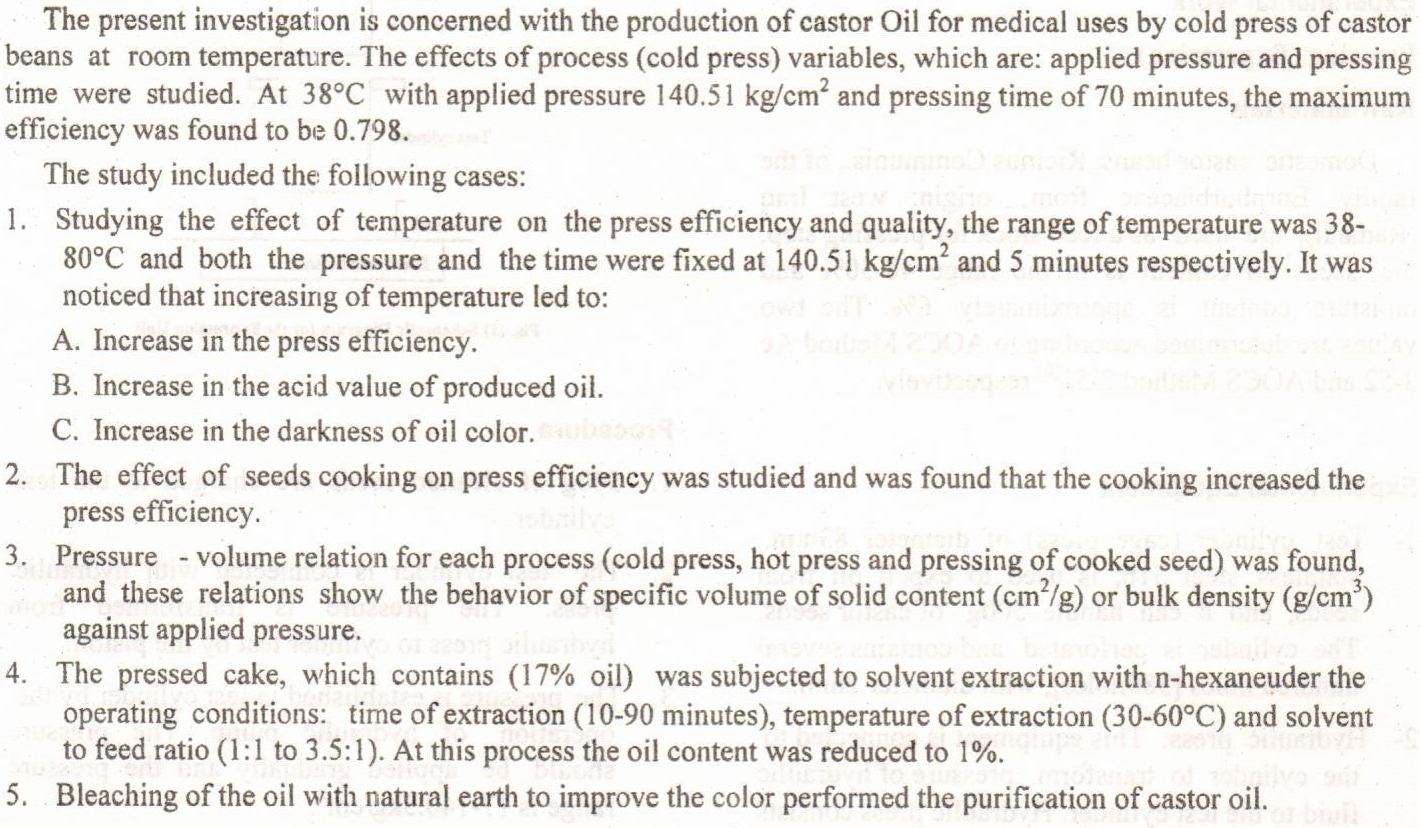
Industrial Investment according to Clean Productive methods is an important element in the process of rational use of Economic Resources, and the Iraqi industrial sector relied on traditional production methods; the productive activities in this sector did not take into consideration the environmental dimension, which leads to achieving the optimal use of economic resources, so it was necessary to have new investment trends heading with Clean Production. Therefore, the research is based on the hypothesis that "Clean Production contributes to improving the environment and rational use of Natural Resources." Based on the descriptive - inductive analysis methodology that study of Iraqi industries with Clean Production,
... Show More (2)
(2)
Bioethanol produced from lignocellulose feedstock is a renewable substitute to declining fossil fuels. Pretreatment using ultrasound assisted alkaline was investigated to enhance the enzyme digestibility of waste paper. The pretreatment was conducted over a wide range of conditions including waste paper concentrations of 1-5%, reaction time of 10-30 min and temperatures of 30-70°C. The optimum conditions were 4 % substrate loading with 25 min treatment time at 60°C where maximum reducing sugar obtained was 1.89 g/L. Hydrolysis process was conducted with a crude cellulolytic enzymes produced by Cellulomonas uda (PTCC 1259).The maximum amount of sugar released and hydrolysis efficiency were 20.92 g/L and 78.4 %, respectively. Sugars
... Show More (1)
(1)
Molasse medium containing different concentrations of (NH4)2 SO4, (NH4)3 PO4, urea, KCI, and P2O5 were compared with the medium used for commercial production of C. utilis in a factory south of Iraq. An efficient medium, which produced 19. 16% dry wt. and 5. 78% protein, was developed. The effect of adding various concentrations of micronutrients (FeSO4, 7T20, MnSO4. 7H20, ZnSO4. 7E20) was also studied. Results showed that FeSo4. 7H20 caused a noticeable increase in both dry wt. and protein content of the yeast.
Bacteria could produce bacterial nanocellulose through a procedure steps: polymerization and crystallization, that occur in the cytoplasm of the bacteria, the residues of glucose polymerize to (β-1,4) lineal glucan chains that produced from bacterial cell extracellularly, these lineal glucan are converted to microfbrils, after that these microfbrils collected together to shape very pure three dimensional pored net. It could be obtained a pure cellulose that created by some M.O, from the one of the active producer organism like Acetic acid bacteria (AAB), that it is a gram -ve, motile and live in aerobic condition. The bacterial nanocellulose (BNC) have great consideration in many fields because of its flexible properties, features
... Show MoreThe present work concerns with simulating unsteady state equilibrium model for production of methyl oleate (biodiesel) from reaction of oleic acid with methanol using sulfuric acid as a catalyst in batch reactive distillation. MESHR equations of equilibrium model were solved using MATLAB (R2010a). The validity of simulation model was tested by comparing the simulation results with a data available in literature. UNIQUAC liquid phase activity coefficient model is the most appropriate model to describe the non-ideality of OLAC-MEOH-MEOL-H2O system. The chemical reactions rates results from EQ model indicating the rates are controlled by chemical kinetics. Several variables was studied such as molar ratio of methanol to oleic acid 4:1, 6:1
... Show MoreGrammatical particles are so important in understanding a text and its meaning in linguistic context. This paper " Grammatical Behavior and Uses of Negative and Prohibitive Particles in Semitic Languages: A Comparative Semitic Study"
tackles a very important topic in Semitic languages. Comparative studies in Semitic languages shed light on phenomena in different languages that are related or have one common origin. No doubt, such studies have their own effects on language study in general especially when studying a specific phenomenon and explaining it by reliance on the one origin, or by investigating the various phases of its historical development.
... Show MoreThe Coronavirus Disease 2019 (COVID-19) pandemic has caused an unprecedented disruption in medical education and healthcare systems worldwide. The disease can cause life-threatening conditions and it presents challenges for medical education, as instructors must deliver lectures safely, while ensuring the integrity and continuity of the medical education process. It is therefore important to assess the usability of online learning methods, and to determine their feasibility and adequacy for medical students. We aimed to provide an overview of the situation experienced by medical students during the COVID-19 pandemic, and to determine the knowledge, attitudes, and practices of medical students regarding electronic medical education.
... Show More (454)
(454)
 (461)
(461)
 (3)
(3)
The estimation of the initial oil in place is a crucial topic in the period of exploration, appraisal, and development of the reservoir. In the current work, two conventional methods were used to determine the Initial Oil in Place. These two methods are a volumetric method and a reservoir simulation method. Moreover, each method requires a type of data whereet al the volumetric method depends on geological, core, well log and petrophysical properties data while the reservoir simulation method also needs capillary pressure versus water saturation, fluid production and static pressure data for all active wells at the Mishrif reservoir. The petrophysical properties for the studied reservoir is calculated using neural network technique
... Show More (7)
(7)
The Mauddud reservoir, Khabaz oil field which is considered one of the main carbonate reservoirs in the north of Iraq. Recognizing carbonate reservoirs represents challenges to engineers because reservoirs almost tend to be tight and overall heterogeneous. The current study concerns with geological modeling of the reservoir is an oil-bearing with the original gas cap. The geological model is establishing for the reservoir by identifying the facies and evaluating the petrophysical properties of this complex reservoir, and calculate the amount of hydrocarbon. When completed the processing of data by IP interactive petrophysics software, and the permeability of a reservoir was calculated using the concept of hydraulic units then, there
... Show More